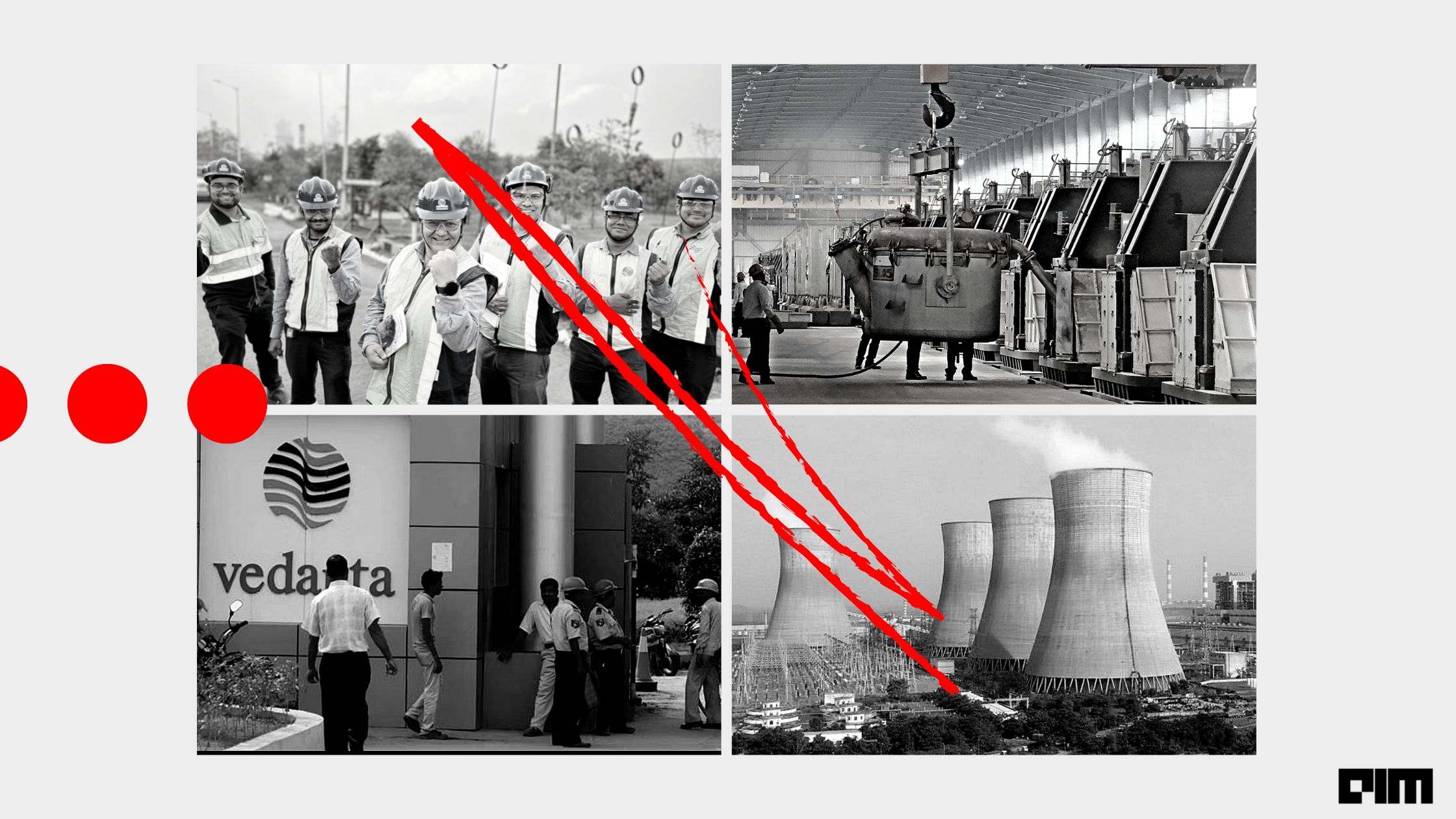|
Listen to this story
|
“In a world full of disruptions, the need for digital transformation is not a choice but a requirement that every organisation, big or small, has to undertake,” says Vineet Jaiswal, chief digital and technology officer at Vedanta Resources Limited.
With the advancements in IT, it becomes mandatory for all businesses to deploy technologies like analytics, AI and utilise cloud-based systems to help them keep abreast with modern ways that help businesses.
In an exclusive interaction with Analytics India Magazine, Vineet Jaiswal speaks about how Vedanta has used the latest technologies to transform its business.
AIM: What was the need for a mining company and conglomerate like Vedanta to undergo digital transformation?
Vineet Jaiswal: According to me, there are four requirements or needs for digital transformation.
- First, there are a lot of uncertainties because of changing requirements of both customers and suppliers. For example, sometimes the demand for a product goes up, but the raw material is not available in the market or the quality of the raw material is different from what is required. In some cases, customers may ask for product delivery within a shorter timeframe. So quicker response to emerging market conditions is one of the key reasons for digital transformation.
- Second is the changing mix of the future workforce, where we have employees with traditional thought processes who are detail-oriented vis-a-vis the new generation that wants everything quicker. So, we have to work out new ways of working.
- The third reason is the evolving industry dynamics due to mergers and acquisitions. Faster re-strategising is the need of the hour for any company.
- Finally, there is a need to create a digital thread between IT & OT systems for gaining end-to-end visibility of the value chain. In the current digital ecosystem, the evolving technologies can be seen both as an opportunity to gain new insights as well as a disruption by others.
AIM: What were the initial changes and challenges? And how soon did the workforce adapt to the transformation?
Vineet Jaiswal: There are multiple changes like upskilling and cross-skilling of employees not only on the technology front but also in making them understand the potential and the need for digital transformation. In Vedanta, we initially saw that there was a lot of energy in the organisation and many things were happening on the ground where employees implemented digital solutions. But they didn’t have the end-to-end visibility of the entire value chain and were not aware of the best industry practices globally. To make them understand the big picture and holistic understanding of the digital ecosystem, we decided to launch Industry 4.0 framework for anyone to connect the business value chain with technology catalogue.
Another challenge that we faced during transformation was adoption. When we rolled out something new, how employees adopted and sustained it is something that we had to carefully manage.
We also realised that while we can upskill and cross-skill employees, sometimes we need special skills which cannot be generated in a short time to enable these transformations. External hiring to meet our requirements is a way to solve this.
We also launched new types of capability building programs like training for data scientists, upskilling bootcamps, and Think Digital sessions for driving cultural change across the organisation. We did Management Act Up programs to pick people from businesses to be part of this transformation.
Digital transformation is a journey and there are a few things that people have adopted and have started demonstrating value. There are other areas like data science, which is a continuous process. Here, we identified gaps in the understanding of digital technologies and therefore launched Vedanta’s Industry 4.0 framework for the entire organisation
AIM: How would you describe the effects of digital transformation across Vedanta’s businesses?
Vineet Jaiswal: In operations, digital transformation has led to improved productivity, cost optimisation, improved quality of finished goods, reduction in rejections due to defects etc. Asset availability also increased due to real-time monitoring of equipment and machinery. This has resulted in better planning and shutdown management. Digitisation also helped us improve safety across operations by reducing fatalities, incidents, implementation of group-wide safety management systems, geofencing of critical operating areas etc.
There’s now a palpable change in mindsets across the organisation. People are expecting a lot from digitisation – touchless processes with minimal man-machine interactions, paperless offices for achieving zero paper usage, etc.
This part of the journey is called digitisation, where we intend to convert data, documents, and processes from analog to digital. Next phase is digitalisation, where the aim is to increase the bottom line of the company by improvement of products, asset reliability, throughput, safety, automation of processes and simplification of communication etc. The last part is digital transformation, where focus is on improving overall revenue through better sales, customer experience, strategy, and solutions to various business challenges.
AIM: Did the company implement transformation processes in-house or were external vendors called upon?
Vineet Jaiswal: The transformation was done in collaboration with business consulting partners, start-ups, and IT technology partners. We have a program called Spark where we give opportunities to start-ups to showcase how they can impact Vedanta’s operations, safety and productivity. We evaluated over 1,300 start-ups and collaborated with some of them for developing solutions by giving them paid pilots across our business units. Currently, we are in Spark 2.0, where we plan to evaluate 1,500+ start-ups; we call this engagement Green Spark as we want to focus on ESG.
AIM: Please share some successful use cases of subsidiaries that have already implemented the technologies for digital transformation?
Vineet Jaiswal: Each and every business of Vedanta has already implemented multiple digital transformation initiatives.
Throughput improvement using APC: For improving throughput, yield and optimising cost, we have deployed Advanced Process Control (APC) to transition our processes from manual control to automated adaptive control. This has resulted in unlocking of significant value and has helped us realize 1-5% gain in throughput, efficiency and cost reduction in zinc, oil & gas and aluminium processing units.
Improving quality of input raw materials using analytics: To get the best cost coal blend with optimal quality parameters and cost, we used analytics for accurate prediction of coal blend and coke output properties without compromising on output quality.
Ensuring safety through computer vision and AI: We deployed computer vision and AI-based safety monitoring to proactively track and report safety violations and non-conformances within our plant premises.
Reducing time to first oil discovery and managing oil output using cloud: Previously all our workstations in the oil and gas business were on the premises, which needed constant upgradation coupled with long procurement cycles, limited computational capabilities, and higher maintenance cost. We decided to move 180 workstations to the cloud to unlock value from data stored in siloed systems resulting in scalability and elasticity, seamless access, cost efficiency, and faster decision-making with reduction in time to first oil discovery.
Asset reliability improvement using predictive maintenance: For improving asset availability and reducing unscheduled downtime, a machine learning based predictive analytics solution was used for preventive maintenance and planning of shutdowns. Supervised and unsupervised machine learning techniques along with advanced pattern recognition technologies were used to recognise patterns from historical data for predicting potential failures.
Safety training through extended reality: To ensure quality training of safety protocols, we have launched an interactive learning zone for safety training purposes. By leveraging augmented and virtual reality technologies, we aim to transform information and knowledge into intuitive, engaging, and outcome-based learning solutions.












































































